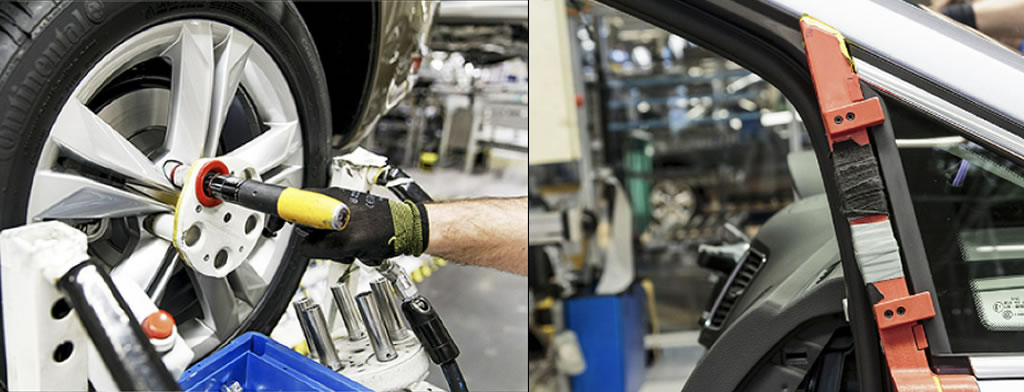Jigs and fixtures are workpieces used to aid in the positioning and assembly of parts. Traditionally, jigs and fixtures are CNC machined to a high tolerance to allow a part to be accurately located or be held in a desired position. The level of customization required for jigs and fixtures usually results in long production lead times and high costs, as the geometries are often unique and difficult to machine.
Although originally only considered a solution for rapid prototyping, improvements in the quality of printed parts, coupled with the range of engineering materials available, now sees FFF printing used for the manufacturing of functional jigs and fixtures. A design can be printed overnight and tested on the assembly line the next morning. Operator feedback can be incorporated into consecutive design iterations until the perfect tool is produced.
Volkswagen Autoeuropa embraced these advantages. With a yearly output of 100,000 cars, these 3D printed jigs and fixtures are used

on the assembly line every day. Having validated the concept in 2014, Volkswagen Autoeuropa currently has seven desktop FFF Ultimakers in operation, producing almost all previously externally manufactured tools in-house. The transition to 3D printing saved Volkswagen Autoeuropa over 90% in tool development costs and time.
In 2016, the facility saved an estimated €150,000 on jigs and fixtures - a figure that is expected to increase to €250,000 in 2017. On top of these time and cost savings, the 3D printed tools are more ergonomic and yield greater operator engagement, as feedback can more easily be incorporated into design iterations.
